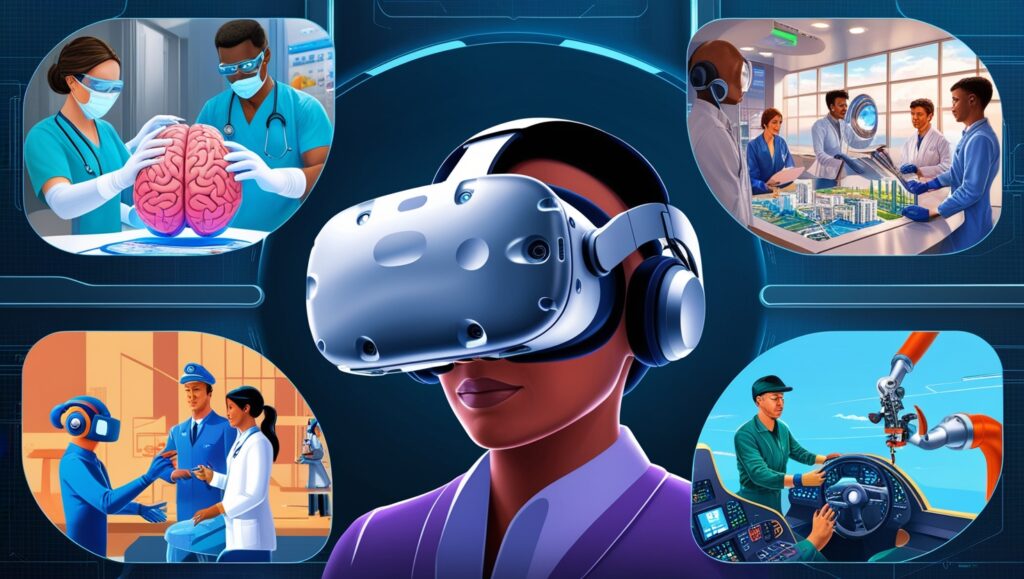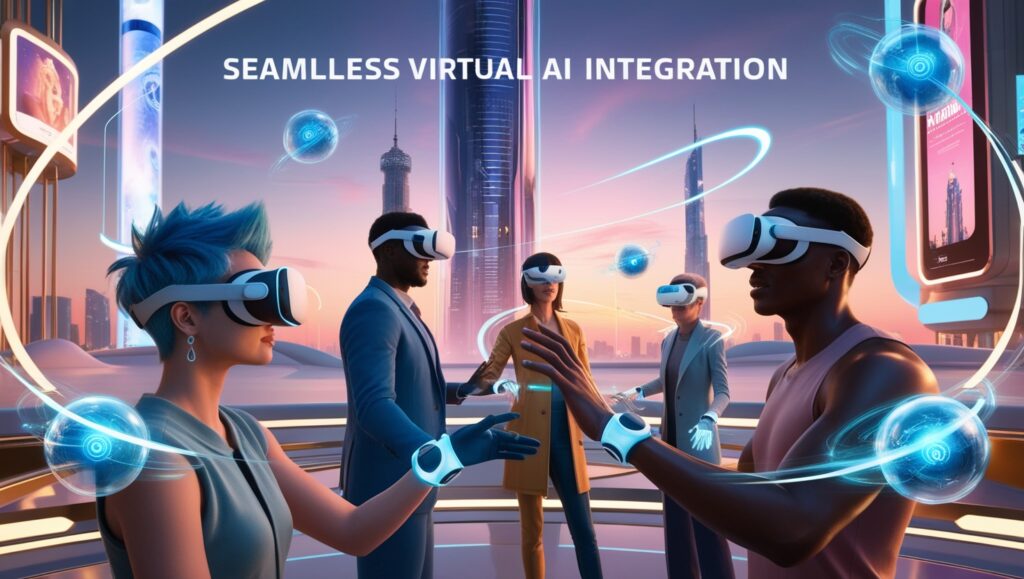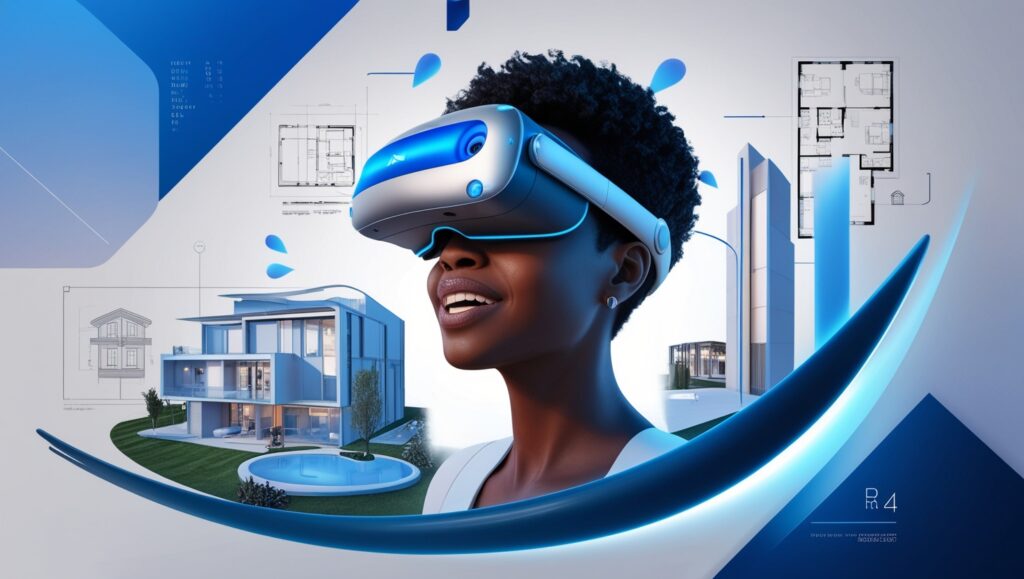Introduction
Virtual Reality (VR) is no longer just a futuristic concept from science fiction; it’s a rapidly advancing technology that has the potential to transform how we experience the world. From immersive gaming to virtual business meetings, VR is changing the way people interact, learn, and communicate. As technology evolves, VR continues to make leaps toward a more interactive, immersive future.
In this article, we will explore the current state of VR, the emerging technologies driving its development, and the industries poised to benefit from its applications. We’ll also look at expert insights, upcoming trends, and practical tips for businesses looking to harness the power of VR.
2. Current State of Virtual Reality
Present Applications of VR
VR is already making waves in various sectors, from entertainment to healthcare. VR gaming has taken the lead in consumer adoption, but VR is also widely used in training simulations for military personnel, surgeons, and pilots. With growing access to affordable VR devices, virtual reality is becoming more mainstream, impacting fields like education, architecture, and real estate.
Evolution of VR in the Last Decade
Over the past ten years, VR has evolved from clunky, tethered devices with limited applications to more lightweight, wireless systems offering realistic visuals and deeper interaction. Companies like Oculus (Meta) and HTC have contributed significantly to this growth, pushing the boundaries of immersive experiences.

3. Key Emerging VR Technologies
Wireless VR Headsets
A significant advancement in the VR space is the shift to wireless headsets, allowing users greater freedom of movement and convenience. Wireless technology eliminates the need for cumbersome cables, making VR more accessible and comfortable.
Eye-Tracking Technology
Eye-tracking technology is revolutionizing how users interact within virtual environments. By tracking the user’s eye movements, VR systems can adjust visuals, offer more immersive interactions, and reduce motion sickness, creating a seamless experience.

Haptic Feedback and Tactile Sensations
Haptic feedback introduces a sense of touch into the virtual space. VR gloves and suits equipped with haptic sensors allow users to feel virtual objects, making the experience more engaging and realistic.
AI Integration in VR
Artificial intelligence (AI) is playing an increasingly crucial role in enhancing virtual reality. AI-powered VR can generate smarter, more responsive environments, learning from user behavior and creating personalized experiences.
VR Motion Tracking Advancements
Improved motion tracking is enabling more fluid and natural interactions in virtual spaces. Systems now track every movement of the user’s body, ensuring greater precision in interactions, making VR feel more intuitive.

Cloud-Based VR Solutions
The rise of cloud-based VR solutions is expected to address the challenges of hardware limitations. Cloud VR allows for remote rendering of complex environments, reducing the need for powerful local hardware, and enhancing the overall user experience.
4. Applications of VR in Various Industries
VR in Gaming
Gaming has been the leading industry in the adoption of VR technology. Immersive experiences offered by VR bring players into the game world like never before. Titles such as Half-Life: Alyx showcase the potential of VR to revolutionize interactive storytelling.
VR in Education and Training
Virtual reality is being used for training purposes in fields like medicine, engineering, and the military. VR simulations provide safe environments for hands-on learning, helping individuals gain real-world experience without risks.

Healthcare and Virtual Surgeries
Healthcare is one of the most exciting sectors where VR is being applied. Surgeons use VR to practice complex procedures, enhancing their skills without the need for physical patients. VR therapy is also being explored to treat anxiety and PTSD.
VR in Architecture and Real Estate
In architecture, VR allows for virtual walkthroughs of designs before construction begins, offering clients a clear vision of the final product. Similarly, real estate agents use VR to give potential buyers immersive tours of properties.
Tourism and Virtual Travel Experiences
Tourism has also been transformed by VR. Virtual tours allow individuals to visit distant locations without leaving their homes, offering a glimpse into places they may otherwise never experience.

VR in Social Interactions and Virtual Meetings
Social platforms like VRChat have redefined how people interact in virtual spaces. VR meetings are also gaining traction, allowing teams to collaborate from across the globe as if they were in the same room.
5. Expert Insights on VR Development
Insights from Industry Experts
Experts in the field of VR have highlighted the importance of continued innovation, particularly in user comfort, content quality, and accessibility. John Carmack, a key figure in VR, has emphasized the need for lighter, more portable VR devices with better battery life.
Challenges and Solutions
The main challenges facing VR include motion sickness, hardware costs, and limited content. Solutions like improved motion tracking and cloud VR aim to overcome these barriers.

6. Future Trends in VR
5G’s Impact on VR Experiences
The rollout of 5G technology is set to significantly enhance VR experiences by reducing latency and enabling real-time interactions in virtual spaces. This will also allow for more seamless cloud-based VR services.
Mixed Reality (MR) and Augmented Reality (AR) Convergence
Mixed reality (MR), which blends VR with augmented reality (AR), is likely to gain more traction. Companies like Microsoft with HoloLens are working towards creating devices that merge both realities, leading to more versatile applications.
The Rise of VR in Metaverse Applications
As companies like Meta (formerly Facebook) invest heavily in the metaverse, VR is expected to play a pivotal role in creating interconnected virtual spaces where users can socialize, work, and play.
7. Practical Applications for Businesses
VR for Marketing
Brands are using VR to create immersive marketing campaigns. Companies like IKEA have developed VR apps where customers can visualize furniture in their homes before purchasing.
VR in Product Design and Testing
In industries like automotive and fashion, VR allows for virtual prototyping and testing of products, reducing costs and speeding up the design process.
Enhancing Customer Experience with VR
Retailers can use VR to improve customer experience by offering virtual showrooms or personalized shopping environments, making shopping more interactive and fun.

8. Conclusion
Virtual Reality is rapidly evolving and holds the potential to reshape numerous industries, from gaming and education to healthcare and marketing. As emerging technologies like AI, 5G, and mixed reality continue to develop, VR will become an even more integral part of our digital lives.
The future of VR is bright, and businesses that embrace its potential stand to gain a competitive edge. Now is the time to explore how VR can be integrated into strategies to create immersive, engaging experiences.

Brand New On-Demand Class From Marco Wutzer Reveals…
How To Multiply Your Net Worth
Over The Next 2 Years.
Introducing A Simple Strategy To Make Life-Changing Money
From The Fastest And Biggest Wealth Transfer In History.



